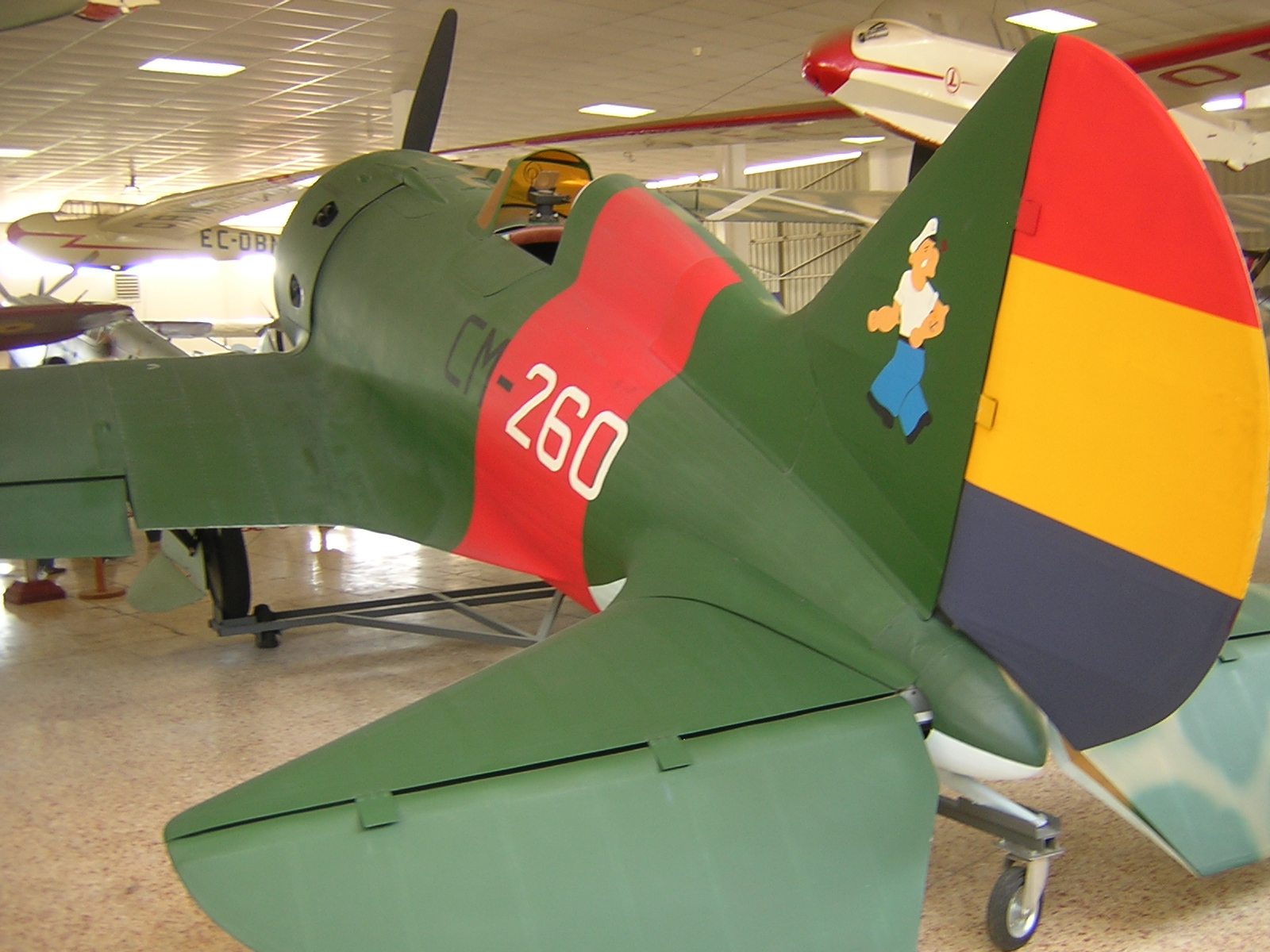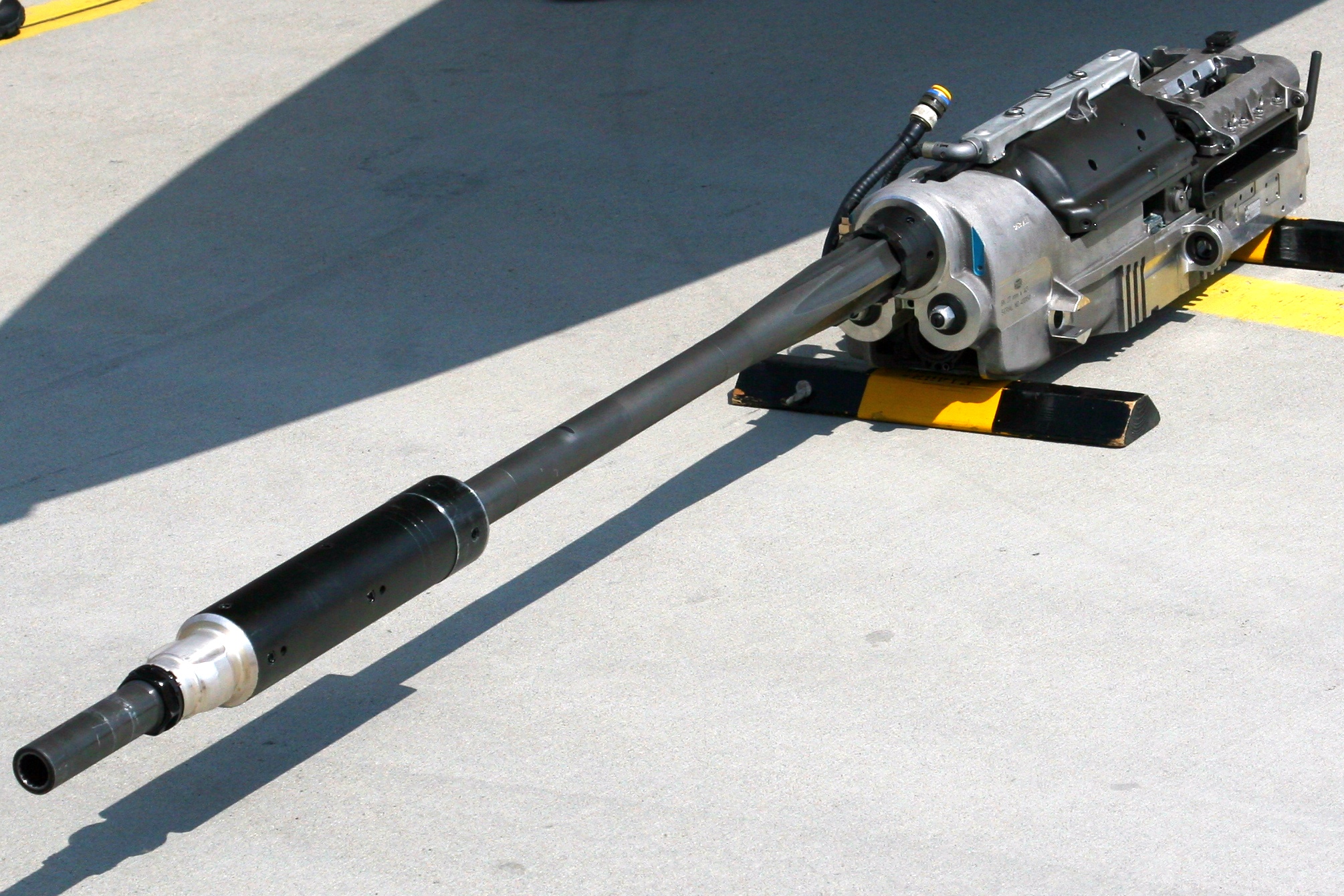|
ShKAS
The ShKAS (Shpitalny-Komaritski Aviatsionny Skorostrelny, Shpitalny-Komaritski rapid fire for aircraft; Russian: ШКАС - Шпитального-Комарицкого Авиационный Скорострельный) is a 7.62 mm calibre machine gun widely used by Soviet aircraft in the 1930s and during World War II. The ShKAS had the highest rate of fire of any aircraft machine gun in general service during WWII. It was designed by Boris Shpitalniy and Irinarkh Komaritsky and entered production in 1934. ShKAS was used in the majority of Soviet fighters and bombers and served as the basis for the ShVAK cannon. Description ShKAS is a gas-operated revolver-type machine gun; it has a single chamber in which the pin strikes the primer. A key element of the ShKAS' high rate of fire is the revolving drum (feed cage) that holds ten rounds and provides a very smooth, progressive removal of the cartridges from their disintegrating link belt. The bolt locking action is ... [...More Info...] [...Related Items...] OR: [Wikipedia] [Google] [Baidu] |
Polikarpov I-16
The Polikarpov I-16 (russian: Поликарпов И-16) is a Soviet single-engine single-seat fighter aircraft of revolutionary design; it was the world's first low-wing cantilever monoplane fighter with retractable landing gear to attain operational status and as such "introduced a new vogue in fighter design".Green, William. "Polikarpov's Little Hawk". ''Flying Review'', November 1969. The I-16 was introduced in the mid-1930s and formed the backbone of the Soviet Air Force at the beginning of World War II. The diminutive fighter, nicknamed "''Ishak''" or "''Ishachok''" (" donkey" or "burro") by Soviet pilots, figured prominently in the Second Sino-Japanese War,Liss 1966, p. 10. the Battle of Khalkhin Gol, Winter War and the Spanish Civil War – where it was called the ("rat") by the Nationalists or (" fly") by the Republicans. The Finns called the aircraft as "( flying squirrel)". Design and development While working on the Polikarpov I-15 biplane, Nik ... [...More Info...] [...Related Items...] OR: [Wikipedia] [Google] [Baidu] |
Polikarpov I-153
The Polikarpov I-153 ''Chaika'' (Russian ''Чайка'', "Seagull") was a late 1930s Soviet biplane fighter. Developed as an advanced version of the I-15 with a retractable undercarriage, the I-153 fought in the Soviet-Japanese combats in Mongolia and was one of the Soviets' major fighter types in the early years of the Second World War. Three I-153s are still flying. Design and development In 1937, the Polikarpov design bureau carried out studies to improve on the performance of its I-15 and I-15bis biplane fighters without sacrificing manoeuvrability, as Soviet tactical doctrine was based on a mix of high performance monoplane fighters (met by the Polikarpov I-16) and agile biplanes.Gordon and Dexter 1999, p. 124. Early combat experience from the Spanish Civil War had shown that the I-16 had problems dealing with the Fiat CR.32 biplanes used by the Italian forces supporting the Nationalists, which suggested a need to continue the use of biplane fighters, and as a result, ... [...More Info...] [...Related Items...] OR: [Wikipedia] [Google] [Baidu] |
ShVAK
The ShVAK ( ru , ШВАК: Шпитальный-Владимиров Авиационный Крупнокалиберный, Shpitalnyi-Vladimirov Aviatsionnyi Krupnokalibernyi, "Shpitalny-Vladimirov Aviation Large-calibre") was a 20 mm autocannon used by the Soviet Union during World War II. It was designed by Boris Shpitalniy and Semyon Vladimirov and entered production in 1936. ShVAK were installed in many models of Soviet aircraft. The TNSh was a version of the gun produced for light tanks ( ru , ТНШ: Tankovyi Nudel’man-Shpitalnyi). ShVAK shares the name with its 12.7 mm heavy machine gun predecessor. Development and production 12.7x108mm ShVAK The development of the 12.7 mm ShVAK was in response to a Soviet government decree passed on 9 February 1931, directing domestic manufacturers to produce an aircraft machine gun for the 12.7×108mm cartridge that had been introduced a couple of years prior for the DK machine gun. Tula designer S.V. Vladimirov answer ... [...More Info...] [...Related Items...] OR: [Wikipedia] [Google] [Baidu] |
Revolver Cannon
A revolver cannon is a type of autocannon, commonly used as an aircraft gun. It uses a cylinder with multiple chambers, like those of a revolver handgun, to speed up the loading-firing-ejection cycle. Some examples are also power-driven, to further speed the loading process. Unlike a rotary cannon, a revolver cannon only has a single barrel, so its spun weight is lower. Automatic revolver cannons have been produced by many different manufacturers. History Precursors An early precursor was the Puckle gun of 1718, a large flintlock revolver gun, manually operated. The design idea was impractical, far ahead of what 18th century technology could achieve. During the 19th century, Elisha Collier and later Samuel Colt used the revolver action to revolutionize handguns. The Confederate States of America used a single 2-inch, 5-shot revolver cannon with manually rotated chambers during the Siege of Petersburg. The gun was captured in Danville, Virginia by Union forces on Apri ... [...More Info...] [...Related Items...] OR: [Wikipedia] [Google] [Baidu] |
Boris Shpitalniy
Boris Gavriilovich Shpitalny (russian: Борис Гавриилович Шпитальный; – 6 February 1972) was a Soviet designer of aircraft guns and cannons and one of the first people awarded the title Hero of Socialist Labor. Career Boris Shpitalny graduated from MAMI Moscow State Technical University in 1927. Three years later, Boris Shpitalny together with Irinarkh Komaritsky designed the ShKAS machine gun, a 7.62 mm machine gun widely used by Soviet aircraft in the 1930s and during World War II. In 1939, a small number of Ultra-ShKAS were produced featuring a firing rate of 3,000 rounds per minute, but these saw only limited use due to reliability problems. ShKAS served as the basis for the ShVAK cannon in 1936 (designed in collaboration with Semyon Vladimirov). This 20-mm autocannon was installed in many Soviet aircraft including Yakovlev Yak-1, Polikarpov I-153 and I-16, Lavochkin La-5 and La-7, LaGG-3, early Ilyushin Il-2, and Soviet-modified Hawker Hu ... [...More Info...] [...Related Items...] OR: [Wikipedia] [Google] [Baidu] |
Zadorozhny Equipment Museum
Zadorozhny (russian: Задорожный) is a rural locality (a settlement) in Krasnoyaruzhsky District, Belgorod Oblast, Russia. The population was 120 as of 2010. There is 1 street. Geography Zadorozhny is located 16 km southwest of Krasnaya Yaruga Krasnaya Yaruga (russian: Кра́сная Яру́га) is an urban-type settlement in Belgorod Oblast in Russia. Population: Geography The village is located from the railway station Sveklovichnaya (russian: Свекловичная) on the B ... (the district's administrative centre) by road. Ilek-Penkovka is the nearest rural locality. References Rural localities in Krasnoyaruzhsky District {{BelgorodOblast-geo-stub ... [...More Info...] [...Related Items...] OR: [Wikipedia] [Google] [Baidu] |
Korean War
{{Infobox military conflict , conflict = Korean War , partof = the Cold War and the Korean conflict , image = Korean War Montage 2.png , image_size = 300px , caption = Clockwise from top:{{Flatlist, * A column of the U.S. 1st Marine Division's infantry and armor moves through Chinese lines during their breakout from the Chosin Reservoir * UN landing at Incheon harbor, starting point of the Battle of Incheon * Korean refugees in front of a U.S. M46 Patton tank * U.S. Marines, led by First Lieutenant Baldomero Lopez, landing at Incheon * F-86 Sabre fighter aircraft , date = {{Ubl, 25 June 1950 – 27 July 1953 (''de facto'')({{Age in years, months, weeks and days, month1=6, day1=25, year1=1950, month2=7, day2=27, year2=1953), 25 June 1950 – present (''de jure'')({{Age in years, months, weeks and days, month1=6, day1=25, year1=1950) , place = Korean Peninsula, Yellow Sea, Sea of Japan, K ... [...More Info...] [...Related Items...] OR: [Wikipedia] [Google] [Baidu] |
Belt (firearm)
upright=1.35, An 7.62×51mm_NATO.html" ;"title="M60 machine gun belt loaded with 7.62×51mm NATO">M60 machine gun belt loaded with 7.62×51mm NATO cartridges, aboard a U.S. Navy patrol craft An ammunition belt is a firearm device used to package and feed cartridge (firearms), cartridges, typically for rapid-firing automatic weapons such as machine guns. Belt-fed systems minimize the proportional weight of the ammunition apparatus to the entire weapon system, and allow high rates of continuous fire without needing frequent magazine changes. The capacity of belts and associated belt containers is typically a function of weight and bulk, and their size is limited by caliber and the combined portability of the weapon and ammunition. The most common ammo capacity typically carried on a man-portable weapon system vary from 50 to 300 rounds. Variants Feed strip 8mm Lebel feed strip on an M1914 Hotchkiss gun. The "feed strip" (also referred to as an "ammo strip" or "feed t ... [...More Info...] [...Related Items...] OR: [Wikipedia] [Google] [Baidu] |
Diagram Of The ShKAS Feed System Operation - En
A diagram is a symbolic representation of information using visualization techniques. Diagrams have been used since prehistoric times on walls of caves, but became more prevalent during the Enlightenment. Sometimes, the technique uses a three-dimensional visualization which is then projected onto a two-dimensional surface. The word ''graph'' is sometimes used as a synonym for diagram. Overview The term "diagram" in its commonly used sense can have a general or specific meaning: * ''visual information device'' : Like the term "illustration", "diagram" is used as a collective term standing for the whole class of technical genres, including graphs, technical drawings and tables. * ''specific kind of visual display'' : This is the genre that shows qualitative data with shapes that are connected by lines, arrows, or other visual links. In science the term is used in both ways. For example, Anderson (1997) stated more generally: "diagrams are pictorial, yet abstract, representati ... [...More Info...] [...Related Items...] OR: [Wikipedia] [Google] [Baidu] |
Maxim Gun
The Maxim gun is a recoil-operated machine gun invented in 1884 by Hiram Stevens Maxim. It was the first fully automatic machine gun in the world. The Maxim gun has been called "the weapon most associated with imperial conquest" by historian Martin Gilbert, and was heavily used by colonial powers during the "Scramble for Africa". Afterwards, Maxim guns also saw extensive usage by different armies during the Russo-Japanese War, the First and Second World Wars, as well as by insurgent groups in contemporary conflicts. The Maxim gun was greatly influential in the development of machine guns, and it has multiple variants and derivatives. Design The Maxim gun featured one of the earliest recoil-operated firing systems in history. Energy from recoil acting on the breech block is used to eject each spent cartridge and insert the next one. Maxim's earliest designs used a 360-degree rotating cam to reverse the movement of the block, but this was later simplified to a toggl ... [...More Info...] [...Related Items...] OR: [Wikipedia] [Google] [Baidu] |
Gabriel Szakats
In Abrahamic religions (Judaism, Christianity and Islam), Gabriel (); Greek: grc, Γαβριήλ, translit=Gabriḗl, label=none; Latin: ''Gabriel''; Coptic: cop, Ⲅⲁⲃⲣⲓⲏⲗ, translit=Gabriêl, label=none; Amharic: am, ገብርኤል, translit=Gabrəʾel, label=none; arc, ܓ݁ܰܒ݂ܪܺܝܐܝܶܠ, translit=Gaḇrīʾēl; ar, جِبْرِيل, Jibrīl, also ar, جبرائيل, Jibrāʾīl or ''Jabrāʾīl'', group="N" is an archangel with power to announce God's will to men. He is mentioned in the Hebrew Bible, the New Testament, and the Quran. Many Christian traditions — including Anglicanism, Eastern Orthodoxy, and Roman Catholicism — revere Gabriel as a saint. In the Hebrew Bible, Gabriel appears to the prophet Daniel to explain his visions (Daniel 8:15–26, 9:21–27). The archangel also appears in the Book of Enoch and other ancient Jewish writings not preserved in Hebrew. Alongside the archangel Michael, Gabriel is described as the guardian an ... [...More Info...] [...Related Items...] OR: [Wikipedia] [Google] [Baidu] |







.jpg)